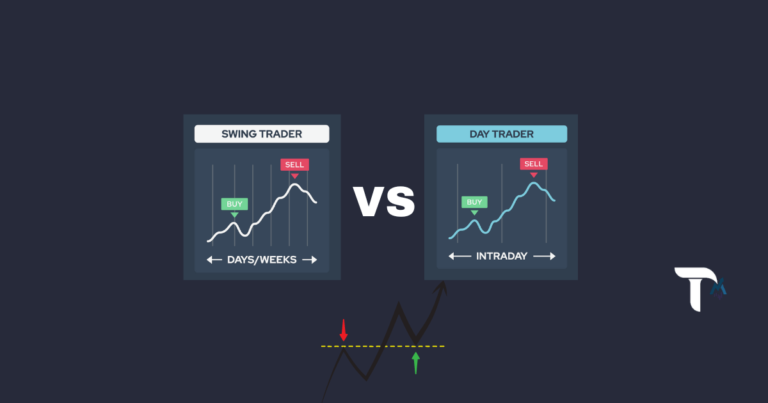5 Successful Intraday Trading Strategies? That Have Been Proven To Work
When it comes to intraday trading, specific strategies have been proven to be successful time and time again. In this article, we will look at the most successful intraday trading strategies and how you can use them to minimize your losses and maximize your profits.
Financial markets provide many people with opportunities for profit, yet trading them can be risky business; therefore, one must understand all associated risks before investing their own funds in them.
What Is Intraday Trading?
Intraday trading is an increasingly popular form of speculative investing where positions are held for less than 24 hours before closing out their positions and closing your portfolio. To be an effective intraday trader, however, one needs a solid trading plan and must use one for success.
Day traders must remember two essentials when conducting trading activities: firstly, they all understand exactly what their desired outcomes from trading and secondly, they all implement and abide by an organized trading plan no matter the circumstances or setbacks that may come their way.
Successful intraday traders understand the key to profitable trading is not letting losses run too deep, thus keeping their losses short and manageable.
Successful Intraday Trading Strategies
- News Trading Strategy
- Breakout Trading Strategy
- Trend following strategy
- Support And Resistance Strategy
- Fibonacci retracement strategy
- MACD crossover strategy
- Swing Trading Strategy
News Trading Strategy

News trading is an emerging strategy involving trading on economic news releases to take advantage of small price movements after each announcement. News traders typically focus on taking advantage of any minor price variations after such news releases take effect to profit from any possible opportunities that emerge after their release.
To succeed at news trading, you must comprehend how markets respond to different forms of news and which releases are likely to trigger price movements.
Utilizing an economic calendar is one way to boost the results of news trading. By keeping tabs on forthcoming releases and events, you’ll know when key announcements will occur and can monitor crucial release times and events.
Breakout Trading Strategy
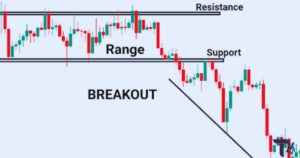
A trader may utilize various trading strategies for maximum profitability when engaging in financial trading activities. One such technique is breakout trading, involves using technical analysis techniques to recognize price patterns across financial instruments.
Breakout trading relies on the concept that prices typically move in cycles that can be identified and traded upon. To identify them, traders use different technical indicators and chart patterns once identified, they place trades accordingly.
There are various approaches to trading breakouts, but one prevalent system is known as the 1-2-3 system. This approach utilizes Fibonacci retracement levels as potential support and resistance levels.
Trend following strategy
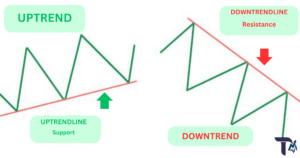
There are various investment strategies, but one which has seen much-increased popularity over time is trend following.
Trend following is an investment strategy where in one attempts to capitalize on market movements by buying assets whose prices are increasing while short-selling those which decrease in price.
The use of a trend-following strategy has many advantages. First, it helps reduce the risk associated with sudden market reversals. Secondly, it enables traders to capitalize on significant price moves by following trends more effectively.
Two things must be considered if you are considering employing a trend-following strategy. First is being comfortable taking on some additional risk. Second, is remaining disciplined to follow through on your chosen strategy.
Support And Resistance Strategy
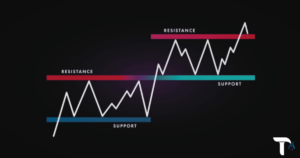
One of the critical concepts in trading is support and resistance, these terms refer to areas on a chart where the price tends to reverse meaning traders can make better-informed decisions regarding when and how to enter or exit trades.
Trading support and resistance levels require adopting various approaches. One way involves looking out for breakouts above or below these lines, another strategy could involve waiting until prices return to an initial level before entering any positions.
Which strategy you opt for will ultimately depend on your preferences; however, understanding how support and resistance levels work can put you in a stronger position to thrive on the market.
Fibonacci Retracement Strategy
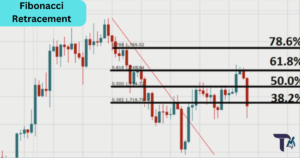
Fibonacci Retracements is a handy technical analysis tool traders use to quickly determine potential support and resistance levels in an asset’s price movement. According to this theory, asset prices tend to retrace towards one or more Fibonacci levels after making an aggressive move in one direction before continuing with their original trend.
Fibonacci Retracement levels typically include 23.6%, 38.2%, 50% and 61.8% retracement levels that measure price movements over multiple waves with increasing size waves in subsequent waves. These percentages also demonstrate relationships between wave counts in an initial price move and subsequent waves created from it.
Example of five wave move. The retracement level would be $122 ($150 – ($150-$100)*0.382).
MACD Crossover Strategy
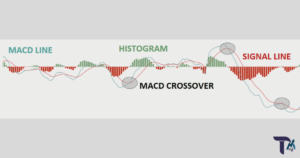
The MACD crossover strategy is a technical analysis indicator used by traders to detect any changes in the momentum of stocks they trade, particularly those within an index such as the S&P500 or Dow 30. When the MACD line crosses over the signal line, traders can predict when the price may shift direction or vice versa.
MACD crossover strategies can be effective ways for traders to trade various stocks, particularly high-volatility ones. When there’s significant price movement, the MACD line becomes more likely to cross over its signal line and move toward that value.
Waiting until your MACD crossover strategy occurs before entering any trade is critical in mitigating risk and saving money. By entering at the right moment, your risk can be drastically decreased by entering at the right moment in time.
Swing Trading Strategy
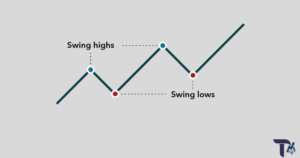
A swing trading strategy can be applied across any market and time period; its success hinges on finding suitable entry and exit points.
Before engaging in swing trading, consider specific points.
Step one is identifying stocks that are trending. Trend lines or moving averages may help in this search process.
Once you’ve identified an asset with potential, the next step should be waiting for a pullback – when its price returns toward its moving average or trend line.
Here you have your entry point. Place your stop loss below the recent low, with two times the distance between the entry point and stop loss being your target goal.
Which Trading Strategy Is The Best For Beginners
Beginners in trading may use various trading strategies to enter the market successfully. Not all strategies are equally successful for beginners; some might require greater understanding than others, making some harder to use than expected for newcomers.
Beginners commonly employ trend following as one trading strategy, as this involves following the market’s general direction to purchase assets when their prices increase and sell when their values decrease.
Counter-trend trading is another practical approach that often delivers impressive gains properly. Counter-trend trading can generate substantial profits if done successfully by placing trades that go in the opposite direction of current trends.
Which trading strategy works best for beginners ultimately depends on their preferences and risk tolerance levels.
What are the benefits of following these strategies?
Trading requires individual decision-making; no strategy fits every trader or can guarantee profits or limit losses. But traders can utilize various trading strategies in their portfolio to optimize profit potential while mitigating losses.
One key benefit of following a trading strategy is its ability to discipline traders and prevent impulsive decision-making. A well-crafted trading plan also considers an individual’s risk tolerance and investment goals to help minimize losses.
Another advantage of developing a trading strategy is being ready to seize market opportunities. When prepared with an action plan, traders are better equipped to enter and exit trades quickly without risking missing potential profits.
Following a trading strategy can also build confidence among traders.
Simple Trading Strategy
The Moving Average Crossover strategy is an efficient and straightforward method for trading the financial markets.
This strategy employs two moving averages – fast and slow – as buy/sell signals.
When the fast-moving average exceeds the slow-moving average, this signals to buy. Conversely, it indicates selling when it exceeds.
This strategy’s charm lies in its accessibility; novice traders and veterans can efficiently utilize it.
The advantage of this strategy is its flexibility – it can be applied across any market and time period.
As with any trading strategy, however, this one has its share of downsides; one such drawback being false signals being generated.
Trading Tips for Beginners
With a few straightforward steps, your chances of making money in the market can drastically increase.
The Importance of a Solid Trading Plan
- Why Every Trader Needs a Plan
Imagine embarking on an unfamiliar road trip without a plan – both exciting and risky at once. Trading without one is similar: its purpose serves as your roadmap, helping guide every decision and anticipate potential hiccups along your trading journey.
- Components of an Effective Trading Plan
An effective plan encompasses more than entry and exit points; it must consider risk management, research methodologies, self-assessment criteria, specific personal goals and risk tolerance criteria. A strong trading plan offers traders everything they need for success based on individual goals and risk tolerance.
Setting Up for Success: The Basics
- Choosing the Right Brokerage
Not all brokerages are equal – from commission structures and platform usability, choosing the ideal brokerage is crucial for traders’ profitability. When making this critical choice, ensure it matches your trading style while offering all the necessary tools.
- Understanding Trading Platforms and Tools
Modern trading involves technology and market understanding; becoming familiar with trading platforms, charting tools, and analytical software can give one an advantage in this digital era.
Staying Up-To-Date with Market News and Staying Afloat is vital to successfully trading stocks on Wall Street and maintaining a competitive edge in today’s volatile global environment.
Information is of utmost importance in intraday trading. Staying abreast of market developments, geopolitical events, and economic indicators could make the difference between seizing an opportunity and missing it altogether.
Risk Management in Intraday Trading
- Why Risk Management is Crucial
Stock market trading presents opportunities and risks; effective risk management helps traders weather these storms and remain viable even after experiencing setbacks.
- Setting Stop-Loss and Take-Profit Levels
Stop-loss levels protect traders against catastrophic losses, while take-profit points allow traders to capture gains before the tide changes in either direction.
- Why The 2% Rule and Why It Matters
This golden rule advises never risking more than 2% of one’s trading capital on any single trade – this helps ensure that even an unfortunate series of losses will only partially wipe out one’s trading account.
What are the steps to follow for each strategy?
Here are a few steps you should follow when planning any trading strategy:
- Set Your Goals. By investing, what do you hope to achieve? Are your hopes for quick profits or long-term investments? Deliberating upon and outlining these questions will allow for forming intelligent investing decisions.
- Understand Your Risk Tolerance. It would help if you determined how much of a risk you can accept; knowing this will enable you to choose the most suitable approach.
- Conduct your research. Once you’ve established your goals and understand your risk tolerance, the next step should be conducting extensive research on different strategies available to you.
The Role of Fundamental Analysis
Key Economic Indicators and Their Impact
From employment data to interest rate decisions, understanding economic indicators gives traders a broad view of market directions.
How Can Company News Impact Stock Prices
Earnings reports, merger announcements and scandal-related news from companies can cause stock prices to soar or plummet swiftly.
Staying Current With Earnings Reports and Announcements
Earnings season can be a tumultuous time. Being prepared can help traders navigate these turbulent waters successfully.
Psychology of Intraday Trading
- The Emotional Rollercoaster: Handling Stress and Anxiety
Trading can be an emotional endeavour; therefore, traders must manage their emotions and trades simultaneously.
- Overcoming Common Psychological Traps
Staying aware of psychological traps like overtrading and confirmation bias is crucial for traders to prevent themselves from falling prey to them.
- The Importance of Discipline and Consistency
Discipline reigns supreme when it comes to trading; sticking to one’s plan can result in long-term success.
Conclusion:
These successful intraday trading strategies will enable you to take advantage of small price movements in the market and profit from them with practice and discipline. Always employ stop-loss orders when opening new positions; scale out as prices shift in your favour as soon as you spot opportunities in intraday trading. Intraday trading can become an incredibly successful investment technique in today’s financial market with practice and dedication.
However, it’s essential to remember there’s no guaranteed approach to successful trading. These strategies may increase your odds of making money. Still, if taking risks makes you uneasy or uncomfortable for any reason, these strategies might not be for you – please always use the money you can afford to risk when trading!




